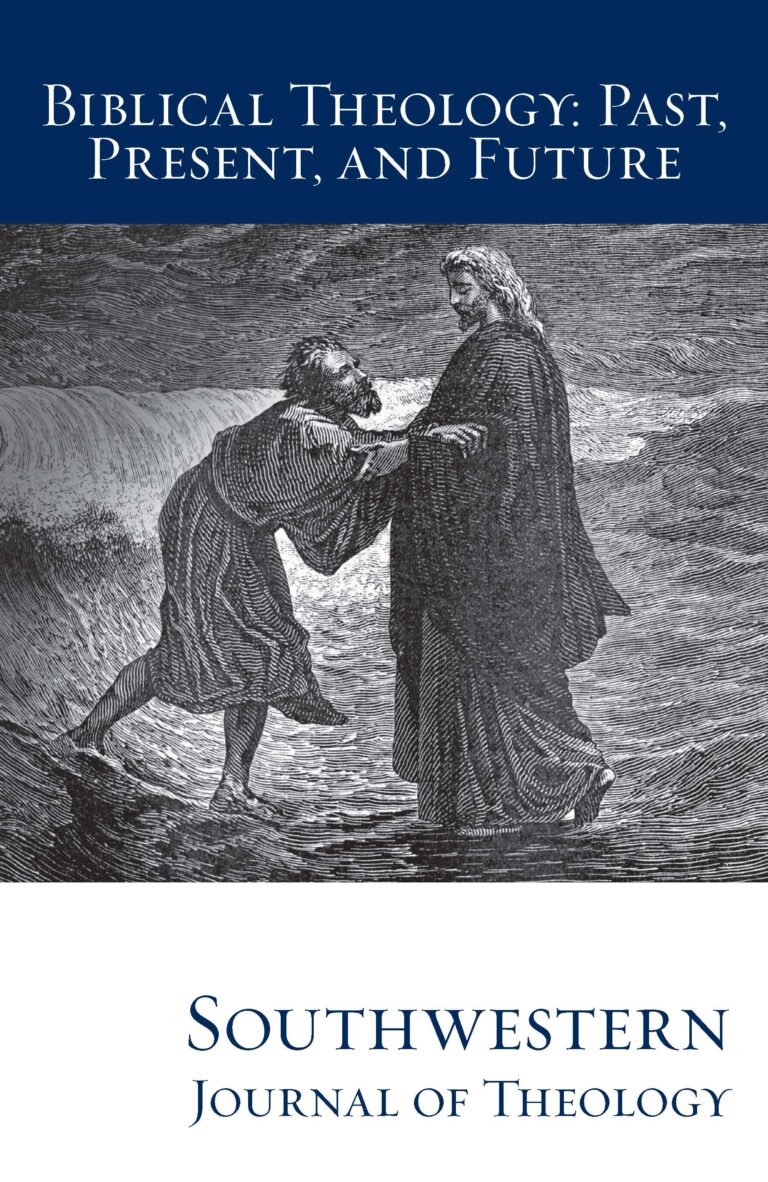
Biblical Theology: Past, Present, and Future (II)
Southwestern Journal of Theology
Volume 56, No. 1 – Fall 2013
Managing Editor: Terry L. Wilder
By Frank Thielman. Baker Exegetical Commentary on the New Testament. Grand Rapids: Baker, 2010. 520 pages. Hardcover, $44.99.
Frank Thielman, Professor of Divinity at Beeson Divinity School and author of numerous works on the law in the New Testament, has delivered an excellent addition to the Baker Exegetical series with his commentary on Ephesians. In his introductory section, Thielman argues: (1) that Ephesians is an authentic Pauline letter written after nearly all of his undisputed letters (5); (2) that certain “peculiarities” in the style of Ephesians may be attributed to specific circumstances being experienced by Paul (10); (3) that the phrase “in Ephesus” in 1:1 is genuine and identifies the letter’s recipients (14); and (4) that Paul writes at the end of his two-year imprisonment in Rome (19) to remind believers of the gospel’s power, of their role as a church, and of their ethical responsibilities (28).
The strengths of this commentary are numerous. As Thielman deals the text’s details, he avoids getting bogged down by keeping sight of the letter’s overall flow. By doing so, Thielman shows consideration for both the discourse as a whole and its individual parts. Furthermore, Thielman repeatedly allows the letter’s context to inform his treatment of difficulties within the text. So, for example, in dealing with Paul’s instruction about submitting “to one another” in 5:21, Thielman examines how the previous occurrences of “one another” (4:2, 25, 32) shed light on the verse (373). Similar examples occur elsewhere in the work (e.g., 397, 415). In this way, Thielman’s commentary exemplifies sound exegetical methodology for students and scholars.
Thielman exhibits remarkable thoroughness in his “Additional Notes” sections, especially in his treatment of text-critical matters. Unlike many commentators that seem overly dependent on Metzger or handle variants in a shallow and simplistic manner, Thielman models depth, breadth, and freshness in this area. He resists the temptation slavishly to follow א and B (e.g., 403), and adequately considers the author’s style and the variant’s geographical distribution. For such consistently excellent treatments of text-critical matters, Thielman’s commentary will be beneficial for those who focus their research on this area of the NT.
Thielman meaningfully interacts with scholars of all ages in his exegesis. Throughout the commentary, he refers to both Jewish and Greco-Roman sources, to early church Fathers, to interpreters from the middle ages, and to more recent scholars of Ephesians. The result is that Thielman’s exegesis is neither narrow-sighted nor uniformed, but marked by a rich balance of insights from modern research alongside the wisdom of the ancients.
Only a few minor weaknesses are found in Thielman’s work. Thielman consistently refers to the dative of sphere. While this is by all means an important aspect of Greek grammar, Thielman regularly refers to it without ever providing a definition. And when Thielman mentions the dative of sphere, he does so in very ambiguous language. So, for example, he explains that believers “live within the sphere of existence that Christ defines” (34), grow “in the sphere encompassed by Christ” (183), and at one point describes the “sphere of knowledge” of prayer (97). Similar language occurs in numerous places throughout the commentary (e.g., 79, 82, 84, 94, 102). It seems that such a consistently used term should have been clearly defined in order to remove the possibility of ambiguity.
One final aspect that may have been improved in this commentary relates to Thielman’s understanding of the oral nature of Ephesians. In numerous places, Thielman views disjointed syntax (119), ambiguous structural details (49, 225), and disorderly compositional style (310) as evidence of the letter’s oral nature. At one point, Thielman states that “Paul seems to have caught himself drifting away . . . [but] then he pulls his train of thought quickly back on track” (379). Such statements regarding the language of the epistle deserve a more focused treatment, perhaps even a section in the introduction, rather than merely appearing as scattered remarks throughout the commentary.
In the end, Thielman’s Ephesians commentary is an invaluable resource that will serve a wide audience for many generations to come. The work’s strengths far outshine its few minor weaknesses. To be sure, Thielman’s work has accomplished the goal of the Baker series by appealing to a wide audience of students, pastors, and scholars, and by giving balanced attention to both the specific details and broader context of the text.





